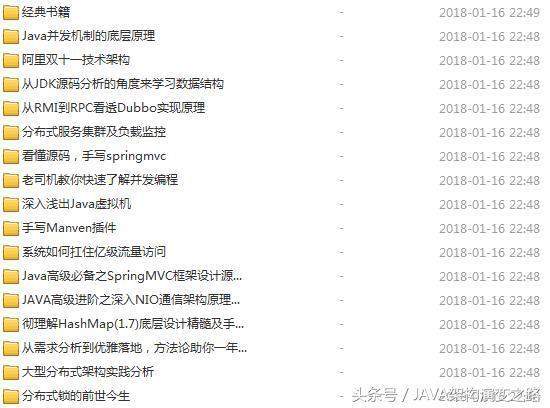单独使用mybatis是有很多限制的(比如无法实现跨越多个session的事务),而且很多业务系统本来就是使用spring来管理的事务,因此mybatis最好与spring集成起来使用。
前置要求
版本要求
| 项目 |
版本 |
下载地址 |
说明 |
| mybatis |
3.0及以上 |
https://github.com/mybatis/mybatis-3/releases |
|
| spring |
3.0及以上 |
http://projects.spring.io/spring-framework/ |
|
| mybatis-spring |
1.0及以上 |
https://github.com/mybatis/spring/releases |
|
spring事务配置
- <!-- 自动扫描业务包 -->
- <context:component-scan base-package="com.xxx.service" />
- <!-- 数据源 -->
- <jee:jndi-lookup id="jndiDataSource" jndi-name="java:comp/env/jdbc/datasource" />
- <!-- 配置事务 -->
- <bean id="txManager"
- class="org.springframework.jdbc.datasource.DataSourceTransactionManager">
- <property name="dataSource" ref="jndiDataSource" />
- </bean>
- <!-- 配置基于注解的事物aop -->
- <tx:annotation-driven transaction-manager="txManager" proxy-target-class="true"/>
单个集成
- <!-- 集成mybatis -->
- <bean id="sqlSessionFactory" class="org.mybatis.spring.SqlSessionFactoryBean">
- <property name="dataSource" ref="jndiDataSource" />
- <property name="configLocation" value="classpath:/mybatis/mybatis-config.xml" />
- <!-- 自动配置别名 -->
- <property name="typeAliasesPackage" value="com.xxx.dto" />
- </bean>
- <!--创建dao bean(只需提供接口不需提供实现类 )-->
- <bean id="userDao" class="org.mybatis.spring.mapper.MapperFactoryBean">
- <property name="mapperInterface" value="com.xxx.dao.UserDao" />
- <property name="sqlSessionFactory" ref="sqlSessionFactory" />
- </bean>
我们不但要明白如何使用,更要明白为什么要这么使用。
SqlSessionFactoryBean是一个工厂bean,它的作用就是解析配置(数据源、别名等)。
MapperFactoryBean是一个工厂bean,在spring容器里,工厂bean是有特殊用途的,当spring将工厂bean注入到其他bean里时,它不是注入工厂bean本身而是调用bean的getObject方法。我们接下来就看看这个getObjec方法干了些什么:
- public T getObject() throws Exception {
- return getSqlSession().getMapper(this.mapperInterface);
- }
看到这里大家应该就很明白了,这个方法和我们之前单独使用Mybatis的方式是一样的,都是先获取一个Sqlsession对象,然后再从Sqlsession里获取Mapper对象(再次强调Mapper是一个代理对象,它代理的是mapperInterface接口,而这个接口是用户提供的dao接口)。自然,最终注入到业务层就是这个Mapper对象。
实际的项目一般来说不止一个Dao,如果你有多个Dao那就按照上面的配置依次配置即可。
如何使用批量更新
前一节讲了如何注入一个mapper对象到业务层, mapper的行为依赖于配置,mybatis默认使用单个更新(即ExecutorType默认为SIMPLE而不是BATCH),当然我们可以通过修改mybatis配置文件来修改默认行为,但如果我们只想让某个或某几个mapper使用批量更新就不得行了。这个时候我们就需要使用模板技术:
- <!--通过模板定制mybatis的行为 -->
- lt;bean id="sqlSessionTemplateSimple" class="org.mybatis.spring.SqlSessionTemplate">
- <constructor-arg index="0" ref="sqlSessionFactory" />
- <!--更新采用单个模式 -->
- <constructor-arg index="1" value="SIMPLE"/>
- </bean>
- <!--通过模板定制mybatis的行为 -->
- lt;bean id="sqlSessionTemplateBatch" class="org.mybatis.spring.SqlSessionTemplate">
- <constructor-arg index="0" ref="sqlSessionFactory" />
- <!--更新采用批量模式 -->
- <constructor-arg index="1" value="BATCH"/>
- </bean>
这里笔者定义了两个模板对象,一个使用单个更新,一个使用批量更新。有了模板之后我们就可以改变mapper的行为方式了:
- <bean id="userDao" class="org.mybatis.spring.mapper.MapperFactoryBean">
- <property name="mapperInterface" value="com.xxx.dao.UserDao" />
- <property name="sqlSessionTemplate" ref=" sqlSessionTemplateBatch " />
- </bean>
跟上一节的mapper配置不同的是,这里不需要配置sqlSessionFactory属性,只需要配置sqlSessionTemplate(sqlSessionFactory属性在模板里已经配置好了)。
通过自动扫描简化mapper的配置
前面的章节可以看到,我们的dao需要一个一个的配置在配置文件中,如果有很多个dao的话配置文件就会非常大,这样管理起来就会比较痛苦。幸好mybatis团队也意识到了这点,他们利用spring提供的自动扫描功能封装了一个自动扫描dao的工具类,这样我们就可以使用这个功能简化配置:
- <!-- 采用自动扫描方式创建mapper bean(单个更新模式) -->
- <bean class="org.mybatis.spring.mapper.MapperScannerConfigurer">
- <property name="basePackage" value="com.xxx.dao" />
- <property name="sqlSessionTemplateBeanName" value="sqlSessionTemplateSimple" />
- <property name="markerInterface" value="com.xxx.dao.SimpleDao" />
- </bean>
- <!-- 采用自动扫描方式创建mapper bean(批量更新模式) -->
- <bean class="org.mybatis.spring.mapper.MapperScannerConfigurer">
- <property name="basePackage" value="com.xxx.dao" />
- <property name="sqlSessionTemplateBeanName" value="sqlSessionTemplateBatch" />
- <property name="markerInterface" value="com.xxx.dao.BatchDao" />
- </bean>
MapperScannerConfigurer本身涉及的spring的技术我就不多讲了,感兴趣且对spring原理比较了解的可以去看下它的源码。我们重点看一下它的三个属性:
basePackage:扫描器开始扫描的基础包名,支持嵌套扫描;
sqlSessionTemplateBeanName:前文提到的模板bean的名称;
markerInterface:基于接口的过滤器,实现了该接口的dao才会被扫描器扫描,与basePackage是与的作用。
除了使用接口过滤外,还可使用注解过滤:
- <!-- 采用自动扫描方式创建mapper bean(批量更新模式) -->
- <bean class="org.mybatis.spring.mapper.MapperScannerConfigurer">
- <property name="basePackage" value="com.xxx.dao" />
- <property name="sqlSessionTemplateBeanName" value="sqlSessionTemplateBatch" />
- <property name="annotationClass" value="com.xxx.dao.BatchAnnotation" />
- </bean>
annotationClass:配置了该注解的dao才会被扫描器扫描,与basePackage是与的作用。
需要注意的是,两个过滤条件只能配一个。
